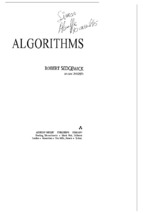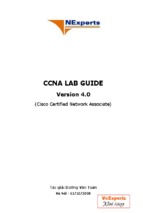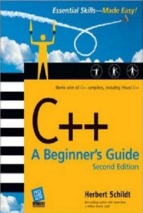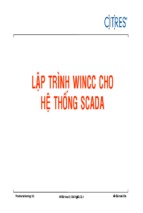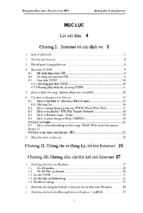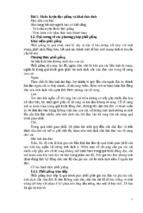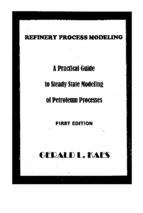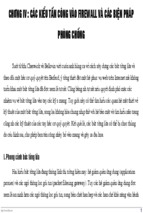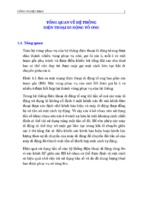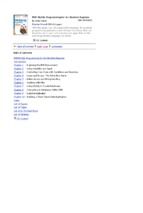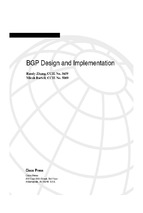SCHAUM’S
OUTLINE OF
MICROECONOMICS
Fourth Edition
This page intentionally left blank
SCHAUM’S
OUTLINE OF
MICROECONOMICS
Fourth Edition
DOMINICK SALVATORE, Ph.D.
Professor of Economics
Fordham University
SCHAUM’S OUTLINE SERIES
McGRAW-HILL
New York Chicago San Francisco Lisbon London
Madrid Mexico City Milan New Delhi San Juan
Seoul Singapore Sydney Toronto
Copyright © 2006, 1992, 1983, 1974 by The McGraw-Hill Companies, Inc. All rights reserved. Manufactured in the United States of
America. Except as permitted under the United States Copyright Act of 1976, no part of this publication may be reproduced or distributed
in any form or by any means, or stored in a database or retrieval system, without the prior written permission of the publisher.
0-07-149171-6
The material in this eBook also appears in the print version of this title: 0-07-146236-8.
All trademarks are trademarks of their respective owners. Rather than put a trademark symbol after every occurrence of a trademarked
name, we use names in an editorial fashion only, and to the benefit of the trademark owner, with no intention of infringement of the trademark. Where such designations appear in this book, they have been printed with initial caps.
McGraw-Hill eBooks are available at special quantity discounts to use as premiums and sales promotions, or for use in corporate training
programs. For more information, please contact George Hoare, Special Sales, at
[email protected] or (212) 904-4069.
TERMS OF USE
This is a copyrighted work and The McGraw-Hill Companies, Inc. (“McGraw-Hill”) and its licensors reserve all rights in and to the work.
Use of this work is subject to these terms. Except as permitted under the Copyright Act of 1976 and the right to store and retrieve one copy
of the work, you may not decompile, disassemble, reverse engineer, reproduce, modify, create derivative works based upon, transmit, distribute, disseminate, sell, publish or sublicense the work or any part of it without McGraw-Hill’s prior consent. You may use the work for
your own noncommercial and personal use; any other use of the work is strictly prohibited. Your right to use the work may be terminated
if you fail to comply with these terms.
THE WORK IS PROVIDED “AS IS.” McGRAW-HILL AND ITS LICENSORS MAKE NO GUARANTEES OR WARRANTIES AS TO
THE ACCURACY, ADEQUACY OR COMPLETENESS OF OR RESULTS TO BE OBTAINED FROM USING THE WORK, INCLUDING ANY INFORMATION THAT CAN BE ACCESSED THROUGH THE WORK VIA HYPERLINK OR OTHERWISE, AND
EXPRESSLY DISCLAIM ANY WARRANTY, EXPRESS OR IMPLIED, INCLUDING BUT NOT LIMITED TO IMPLIED WARRANTIES OF MERCHANTABILITY OR FITNESS FOR A PARTICULAR PURPOSE. McGraw-Hill and its licensors do not warrant or
guarantee that the functions contained in the work will meet your requirements or that its operation will be uninterrupted or error free.
Neither McGraw-Hill nor its licensors shall be liable to you or anyone else for any inaccuracy, error or omission, regardless of cause, in the
work or for any damages resulting therefrom. McGraw-Hill has no responsibility for the content of any information accessed through the
work. Under no circumstances shall McGraw-Hill and/or its licensors be liable for any indirect, incidental, special, punitive, consequential
or similar damages that result from the use of or inability to use the work, even if any of them has been advised of the possibility of such
damages. This limitation of liability shall apply to any claim or cause whatsoever whether such claim or cause arises in contract, tort or otherwise.
DOI: 10.1036/0071462368
Professional
Want to learn more?
We hope you enjoy this
McGraw-Hill eBook! If
you’d like more information about this book,
its author, or related books and websites,
please click here.
PREFACE
Microeconomic theory presents, in a systematic way, some of the basic analytical
techniques or “tools of analysis” of economics. As such, it has traditionally been one of
the most important courses in all economics and business curricula and is a requirement in
practically all colleges and universities.
Being highly abstract in nature, microeconomic theory is also one of the most difficult
courses and often becomes a stumbling block for many students. The purpose of this
book is to help overcome this difficulty by approaching microeconomic theory from a
learn-by-doing methodology. While the book is primarily intended as a supplement to all
current standard textbooks in microeconomic theory, the statements of theory and
principles are sufficiently complete to enable its use for independent study as well.
Each chapter begins with a clear statement of theory, principles, or background
information, fully illustrated with examples. This is followed by a set of multiple-choice
review questions with answers. Subsequently, numerous theoretical and numerical problems
are presented with their detailed, step-by-step solutions. These solved problems serve to
illustrate and amplify the theory, to bring into sharp focus those fine points without which
the student continually feels on unsafe ground, and to provide the applications and the
reinforcement so vital to effective learning.
The topics are arranged in the order in which they are usually covered in intermediate
microeconomic theory courses and texts. As far as content, this book contains more material
than is covered in one-semester courses in undergraduate microeconomic theory. Thus, while
directed primarily at undergraduates, it can also provide a useful source of reference for M.A.
students, M.B.A. students and businesspeople. There is no prerequisite for its study other
than a prior course in or some knowledge of elementary economics.
The methodology of this book and much of its content have been tested in microeconomic theory classes at Fordham University. The students were enthusiastic and made
many valuable suggestions for improvements. To all of them I am deeply grateful. I
would like to express my gratitude to the entire Schaum staff of McGraw-Hill for their
assistance and especially to Barbara Gibson and Adrinda Kelly.
This is the fourth edition of a book that has enjoyed a very gratifying market success and
has been translated into nine languages (Spanish, French, Italian, Portuguese, Greek,
Chinese, Japanese, Arabic, and Indonesian) and was reprinted in India and Taiwan. All
the features that made the first and second editions successful were retained in the third
edition.
The following revisions were included in this edition:
.
.
A brand new chapter (Chapter 12) has been added on Game Theory and Oligopolistic
Behavior. Game theory is one of the most important development in microeconomic
theory and all texts now include it.
A second new chapter (Chapter 15) has also been added on the Economics of
Information. The economics of information is another important development in
Copyright © 2006, 1992, 1983, 1974 by The McGraw-Hill Companies, Inc. Click here for terms of use.
PREFACE
vi
microeconomic theory and reflects the fact that we now do live an information
economy.
. Chapter 7 was expanded with the inclusion of Section 7.8 on The Cobb-Douglas
Production Function, Section 7.9 on X-Inefficiency, and Section 7.10 on Technological Progress.
. New Section 11.6 on Transfer Pricing was added to new Chapter 11.
. Numerous additional examples, review questions, and problems and applications
were included throughout the volume.
These additions should be very useful, particularly to the more eager undergraduate student,
as well as to M.A. and M.B.A. students. Many other changes were also made throughout to
reflect the numerous helpful comments that I received from the many professors and students
who used the first two editions. Finally, the glossary of important economic terms and the
sample midterm and final examinations were revised and expanded.
DOMINICK SALVATORE
For more information about this title, click here
CONTENTS
CHAPTER 1
Preface
Introduction
1.1
1.2
1.3
1.4
1.5
1.6
1.7
CHAPTER 2
Demand, Supply, and Equilibrium: An Overview
2.1
2.2
2.3
2.4
2.5
2.6
2.7
2.8
2.9
2.10
2.11
CHAPTER 3
The Individual’s Demand for a Commodity
The Law of Negatively Sloped Demand
Shifts in the Individual’s Demand Curve
The Market Demand for a Commodity
The Single Producer’s Supply of a Commodity
The Shape of the Supply Curve
Shifts in the Single Producer’s Supply Curve
The Market Supply of a Commodity
Equilibrium
Types of Equilibria
Shifts in Demand and Supply, and Equilibrium
The Measurement of Elasticities
3.1
3.2
3.3
3.4
3.5
3.6
CHAPTER 4
The Purpose of Theory
The Problem of Scarcity
The Function of Microeconomic Theory
Markets, Functions, and Equilibrium
Comparative Statics and Dynamics
Partial Equilibrium and General Equilibrium Analysis
Positive Economics and Normative Economics
Price Elasticity of Demand
Arc and Point Elasticity
Point Elasticity and Total Expenditures
Income Elasticity of Demand
Cross Elasticity of Demand
Price Elasticity of Supply
Consumer Demand Theory
4.1
4.2
4.3
4.4
Total and Marginal Utility
Consumer Equilibrium
Indifference Curves: Definition
The Marginal Rate of Substitution
v
1
1
1
1
2
2
2
2
14
14
15
15
15
17
17
17
18
18
19
19
39
39
40
41
42
43
44
62
62
63
64
65
viii
CONTENTS
Characteristics of Indifference Curves
The Budget Constraint Line
Consumer Equilibrium
Exchange
The Income-Consumption Curve and the Engel Curve
The Price-Consumption Curve and the Consumer’s
Demand Curve
4.11 Separation of the Substitution and Income Effects
66
67
67
68
68
Advanced Topics in Consumer Demand Theory
102
The Substitution Effect According to Hicks and Slutsky
The Theory of Revealed Preference
Index Numbers and Changes in the Standard of Living
Utility Theory Under Uncertainty
A New Approach to Consumer Theory—the Demand
for Characteristics
Empirical Demand Curves
102
103
104
105
4.5
4.6
4.7
4.8
4.9
4.10
CHAPTER 5
5.1
5.2
5.3
5.4
5.5
5.6
CHAPTER 6
Theory of Production
Production With One Variable Input:
Total, Average, and Marginal Product
6.2 The Shapes of the Average and Marginal Product Curves
6.3 Stages of Production
6.4 Production With Two Variable Inputs: Isoquants
6.5 The Marginal Rate of Technical Substitution
6.6 Characteristics of Isoquants
6.7 Isocosts
6.8 Producer Equilibrium
6.9 Expansion Path
6.10 Factor Substitution
6.11 Constant, Increasing, and Decreasing Returns To Scale
69
70
106
107
118
6.1
CHAPTER 7
Costs of Production
7.1
7.2
7.3
7.4
7.5
7.6
7.7
7.8
Short-Run Total Cost Curves
Short-Run Per-Unit Cost Curves
The Geometry of Short-Run Per-Unit Cost Curves
The Long-Run Average Cost Curve
The Shape of The Long-Run Average Cost Curve
The Long-Run Marginal Cost Curve
The Long-Run Total Cost Curve
The Cobb-Douglas Production Function
118
119
120
121
122
122
123
124
124
125
125
146
146
147
148
149
150
151
152
152
CONTENTS
7.9 X-Inefficiency
7.10 Technological Progress
CHAPTER 8
CHAPTER 10
152
153
Midterm Examination
179
Price and Output Under Perfect Competition
184
8.1
8.2
8.3
8.4
8.5
8.6
8.7
8.8
8.9
8.10
CHAPTER 9
ix
Perfect Competition Defined
Price Determination in the Market Period
Short-Run Equilibrium of the Firm: Total Approach
Short-Run Equilibrium of the Firm: Marginal Approach
Short-Run Profit or Loss?
Short-Run Supply Curve
Long-Run Equilibrium of the Firm
Constant Cost Industries
Increasing Cost Industries
Decreasing Cost Industries
184
185
185
186
188
189
189
190
191
192
Price and Output Under Pure Monopoly
212
9.1 Pure Monopoly Defined
9.2 The MR Curve and Elasticity
9.3 Short-Run Equilibrium Under Pure Monopoly:
Total Approach
9.4 Short-Run Equilibrium Under Pure Monopoly:
Marginal Approach
9.5 Long-Run Equilibrium Under Pure Monopoly
9.6 Regulation of Monopoly: Price Control
9.7 Regulation of Monopoly: Lump-Sum Tax
9.8 Regulation of Monopoly: Per-Unit Tax
9.9 Price Discrimination
212
213
Price and Output Under Monopolistic
Competition and Oligopoly
10.1
10.2
10.3
10.4
10.5
10.6
10.7
Monopolistic Competition Defined
Short-Run Equilibrium Under Monopolistic Competition
Long-Run Equilibrium Under Monopolistic Competition
Oligopoly Defined
The Cournot Model
The Edgeworth Model
The Chamberlin Model
213
214
215
216
216
217
218
238
238
238
239
239
240
240
241
x
CONTENTS
10.8
10.9
10.10
10.11
10.12
CHAPTER 11
The Kinked Demand Curve Model
The Centralized Cartel Model
The Market-Sharing Cartel Model
Price Leadership Model
Long-Run Equilibrium Under Oligopoly
Recent and Advanced Topics in
Market Structure
11.1 The Lerner Index as a Measure of a Firm’s Monopoly
Power
11.2 The Herfindahl Index as Measure of Monopoly Power
in an Industry
11.3 Contestable-Market Theory
11.4 Peak-Load Pricing
11.5 Cost-Plus Pricing
11.6 Transfer Pricing
CHAPTER 12
Game Theory and Oligopolistic Behavior
12.1
12.2
12.3
12.4
12.5
12.6
12.7
CHAPTER 13
Game Theory: Definitions and Objectives
Dominant Strategy
Nash Equilibrium
The Prisoners’ Dilemma
Price and Nonprice Competition and Cartel Cheating
Repeated Games and Tit-For-Tat Strategy
Strategic Behavior
Input Pricing and Employment
241
242
243
243
244
262
262
262
262
263
264
264
272
272
272
273
273
274
274
274
283
Perfect Competition in the Product and Input Markets
13.1 Profit Maximization and Least-Cost Input Combinations
13.2 The Demand Curve of the Firm for One Variable Input
13.3 The Demand Curve of the Firm for One of Several
Variable Inputs
13.4 The Market Demand Curve for an Input
13.5 The Market Supply Curve for an Input
13.6 Pricing and Level of Employment of an Input
13.7 Rent and Quasi-Rent
283
283
284
285
285
285
286
Perfect Competition in the Market and Monopoly in the
Product Market
13.8 Profit Maximization and Least-Cost Input Combinations
13.9 The Demand Curve of the Firm for One Variable Input
286
286
xi
CONTENTS
13.10 The Demand Curve of the Firm for One of Several
Variable Inputs
13.11 The Market Demand Curve and Input Pricing
287
287
Monopsony
13.12 Input Supply Curve and Marginal Resource Costs
13.13 Pricing and Employment for One Variable Input
13.14 Pricing and Employment of Several Variable Inputs
CHAPTER 14
288
289
289
General Equilibrium and Welfare Economics
312
General Equilibrium
14.1
14.2
14.3
14.4
14.5
14.6
Partial and General Equilibrium Analysis
General Equilibrium of Exchange
General Equilibrium of Production
The Transformation Curve
The Slope of the Transformation Curve
General Equilibrium of Production and Exchange
312
312
313
314
315
315
Welfare Economics
14.7
14.8
14.9
14.10
14.11
14.12
14.13
14.14
CHAPTER 15
Welfare Economics Defined
The Utility-Possibility Curve
Grand Utility-Possibility Curve
The Social Welfare Function
The Point of Maximum Social Welfare
Perfect Competition and Economic Efficiency
Externalities and Market Failure
Public Goods
316
316
317
317
318
318
318
319
The Economics of Information
15.1 The Economics of Search
15.2 Searching for The Lowest Price
15.3 Asymmetric Information: The
Adverse Selection
15.4 Market Signaling
15.5 The Problem of Moral Hazard
15.6 The Principal-Agent Problem
15.7 The Efficiency Wage Theory
336
Market
for
Lemons
336
336
and
337
337
337
338
338
Final Examination
347
Index
351
This page intentionally left blank
SCHAUM’S
OUTLINE OF
MICROECONOMICS
Fourth Edition
This page intentionally left blank
CHAPTER 1
Introduction
1.1
THE PURPOSE OF THEORY
The purpose of theory is to predict and explain. A theory is a hypothesis that has been successfully tested. A
hypothesis is tested not by the realism of its assumption(s) but by its ability to predict accurately and explain,
and also by showing that the outcome follows logically and directly from the assumptions.
EXAMPLE 1. From talking to friends and neighbors, from observations in the butcher shop, and from our own behavior,
we observe that when the price of a particular cut of meat rises, we buy less of it. From this casual real-world observation, we
could construct the following general hypothesis: “If the price of a commodity rises, then the quantity demanded of the
commodity declines.” In order to test this hypothesis and arrive at a theory of demand, we must go back to the real
world to see whether this hypothesis is indeed true for various commodities, for various people, and at different points
in time. Since these outcomes would follow logically and directly from the assumptions (i.e., consumers would want to
substitute cheaper for more expensive commodities) we would accept the hypothesis as a theory.
1.2
THE PROBLEM OF SCARCITY
The word scarce is closely associated with the word limited or economic as opposed to unlimited or free.
Scarcity is the central fact of every society.
EXAMPLE 2. Economic resources are the various types of labor, capital, land, and entrepreneurship used in producing
goods and services. Since the resources of every society are limited or scarce, the ability of every society to produce goods
and services is also limited. Because of this scarcity, all societies face the problems of what to produce, how to produce, for
whom to produce, how to ration the commodity over time, and how to provide for the maintenance and growth of the system.
In a free-enterprise economy (i.e., one in which the government does not control economic activity), all these problems are
solved by the price mechanism (see Problems 1.5 to 1.9).
1.3
THE FUNCTION OF MICROECONOMIC THEORY
Microeconomic theory, or price theory, studies the economic behavior of individual decision-making units
such as consumers, resource owners, and business firms in a free-enterprise economy.
EXAMPLE 3. During the course of business activity, firms purchase or hire economic resources supplied by households
in order to produce the goods and services demanded by households. Households then use the income received from the sale
of resources (or their services) to business firms to purchase the goods and services supplied by business firms. The “circular
flow” of economic activity is now complete (see Problem 1.11). Thus, microeconomic theory, or price theory, studies
the flow of goods and services from business firms to households, the composition of such a flow, and how the prices of
goods and services in the flow are determined. It also studies the flow of the services of economic resources from resource
1
Copyright © 2006, 1992, 1983, 1974 by The McGraw-Hill Companies, Inc. Click here for terms of use.
2
INTRODUCTION
[CHAP. 1
owners to business firms, the particular uses into which these resources flow, and how the prices of these resources
are determined.
1.4
MARKETS, FUNCTIONS, AND EQUILIBRIUM
A market is the place or context in which buyers and sellers buy and sell goods, services, and resources. We
have a market for each good, service, and resource bought and sold in the economy.
A function shows the relationship between two or more variables. It indicates how the value of one variable
(the dependent variable) depends on and can be found by specifying the value of one or more other (independent) variables.
Equilibrium refers to the market condition which once achieved, tends to persist. Equilibrium results from
the balancing of market forces.
EXAMPLE 4. The market demand function for a commodity gives the relationship between the quantity demanded of the
commodity per time period and the price of the commodity (while keeping everything else constant). By substituting various
hypothetical prices (the independent variable) into the demand function, we get the corresponding quantities demanded of
the commodity per time period (the dependent variable) (see Problem 1.13). The market supply function for a commodity is
an analogous concept—except that we now deal with the quantity supplied rather than the quantity demanded of the
commodity (see Problem 1.14).
EXAMPLE 5. The market equilibrium for a commodity occurs when the forces of market demand and market supply for
the commodity are in balance. The particular price and quantity at which this occurs tend to persist in time and are referred to
as the equilibrium price and the equilibrium quantity of the commodity (see Problem 1.15).
1.5
COMPARATIVE STATICS AND DYNAMICS
Comparative statics studies and compares two or more equilibrium positions, without regard to the transitional period and process involved in the adjustment.
Dynamics, on the other hand, deals with the time path and the process of adjustment itself. In this book we
deal almost exclusively with comparative statics.
EXAMPLE 6. Starting from a position of equilibrium, if the market demand for a commodity, its supply, or both vary, the
original equilibrium will be disturbed and a new equilibrium usually will eventually be reached. Comparative statics studies
and compares the values of the variables involved in the analysis at these two equilibrium positions (see Problem 1.17),
while dynamic analysis studies how these variables change over time as one equilibrium position evolves into another.
1.6
PARTIAL EQUILIBRIUM AND GENERAL EQUILIBRIUM ANALYSIS
Partial equilibrium analysis is the study of the behavior of individual decision-making units and the
working of individual markets, viewed in isolation.
General equilibrium analysis, on the other hand, studies the behavior of all individual decision-making
units and all individual markets, simultaneously. This book deals primarily with partial equilibrium analysis.
EXAMPLE 7. The change in the equilibrium condition of the commodity in Example 5 was examined only in terms of
what happens in the market of that particular commodity. That is, we abstracted from all other markets by implicitly keeping
everything else constant (the “ceteris paribus” assumption). We were then dealing with partial equilibrium analysis.
However, when the equilibrium condition for this commodity changes, it will affect to a greater or lesser degree and directly
or indirectly the market for every other commodity, service, and factor. This is examined in general equilibrium analysis in
Chapter 14.
1.7
POSITIVE ECONOMICS AND NORMATIVE ECONOMICS
Positive economics deals with or studies what is, or how the economic problems facing a society are
actually solved.
CHAP. 1]
INTRODUCTION
3
Normative economics, on the other hand, deals with or studies what ought to be, or how the economic
problems facing the society should be solved. This book deals primarily with positive economics.
EXAMPLE 8. Suppose that a firm pollutes the air in the process of producing its output. If we study how much
additional cleaning cost is imposed on the community by this pollution, we are dealing with positive economics.
Suppose that the firm threatens to move out rather than pay for installing antipollution equipment. The community must
then decide whether it will allow the firm to continue to operate and pollute, pay for the antipollution equipment
itself, or just force the firm out with a resulting loss of jobs. In reaching these decisions, the community is dealing with
normative economics.
Glossary
Comparative statics It studies and compares two or more equilibrium positions, without regard to the transitional
period and process involved in the adjustment.
Dynamics
The study of the time path and process of adjustment to disequilibrium.
Equilibrium
Function
The market condition which once achieved tends to persist.
The relationship between two or more variables.
General equilibrium analysis The study of the behavior of individual decision-making units and all individual
markets simultaneously.
Hypothesis
An “if-then” statement usually obtained from a causal observation of the real world.
Market The place or context in which buyers and sellers buy and sell goods, services, and resources.
Microeconomic theory or price theory The study of the economic behavior of individual decision-making units such
as consumers, resource owners, and business firms in a free-enterprise economy.
Normative economics
solved.
The study of what ought to be, or how the economic problems facing the society should be
Partial equilibrium analysis The study of the behavior of individual decision-making units and the working of individual markets, viewed in isolation.
Positive economics
The study of what is, or how the economic problems facing a society are actually solved.
Scarce
Limited, or economic (as opposed to unlimited, or free).
Theory
A hypothesis that has been successfully tested.
Review Questions
1.
A theory is (a) an assumption, (b) an “if-then” proposition, (c) a hypothesis, or (d ) a validated hypothesis.
Ans.
2.
(d ) See Section 1.1 and Example 1.
A hypothesis is tested by (a) the realism of its assumption(s), (b) the lack of realism of its assumption(s),
(c) its ability to predict accurately an outcome that follows logically from the assumption(s), or (d ) none of the
above.
Ans.
(c) See Section 1.1 and Example 1.
4
3.
INTRODUCTION
[CHAP. 1
The meaning of the word “economic” is most closely associated with the word (a) free, (b) scarce, (c) unlimited, or
(d ) unrestricted.
Ans. (b) Economic factors and goods are those factors and goods which are scarce or limited in supply and thus
command a price.
4.
In a free-enterprise economy, the problems of what, how, and for whom are solved by (a) a planning committee,
(b) the elected representatives of the people, (c) the price mechanism, or (d ) none of the above.
Ans.
5.
(c) See Example 2.
Microeconomic theory studies how a free-enterprise economy determines (a) the price of goods, (b) the price of
services, (c) the price of economic resources, or (d ) all of the above.
Ans. (d ) Because microeconomic theory is primarily concerned with the determination of all prices in a free-enterprise economy, it is often referred to as price theory.
6.
A market (a) necessarily refers to a meeting place between buyers and sellers, (b) does not necessarily refer to a
meeting place between buyers and sellers, (c) extends over the entire nation, or (d) extends over a city.
Ans. (b) Because of modern communications, buyers and sellers need not come face to face with one another
to buy and sell. The market for some commodities extends over a city or a section therein; the market for other
commodities may extend over the entire nation or even the world.
7.
A function refers to (a) the demand for a commodity, (b) the supply of a commodity, (c) the demand and supply of a
commodity, service, or resource, or (d ) the relationship between one dependent variable and one or more independent variables.
Ans. (d ) See Section 1.4. Demand functions and supply functions are examples of functions, but the term “function” is a completely general term and refers to the relationship between any dependent variable and its corresponding independent variable(s).
8.
The market equilibrium for a commodity is determined by (a) the market demand for the commodity, (b) the market
supply of the commodity, (c) the balancing of the forces of demand and supply for the commodity, or (d ) any of
the above.
Ans.
9.
(c) See Section 1.4 and Example 5.
Which of the following is incorrect?
(a) Microeconomics is concerned primarily with the problem of what, how, and for whom to produce.
(b) Microeconomics is concerned primarily with the economic behavior of individual decision-making units when
at equilibrium.
(c) Microeconomics is concerned primarily with the time path and process by which one equilibrium position
evolves into another.
(d ) Microeconomics is concerned primarily with comparative statics rather than dynamics.
Ans.
10.
(c) Choice c is the definition of dynamics. Dynamic microeconomics is still in its infancy.
Which of the following statements is most closely associated with general equilibrium analysis?
(a) Everything depends on everything else.
(b) Ceteris paribus.
(c) The equilibrium price of a good or service depends on the balancing of the forces of demand and supply for
that good or service.
(d ) The equilibrium price of a factor depends on the balancing of the forces of demand and supply for that
factor.



